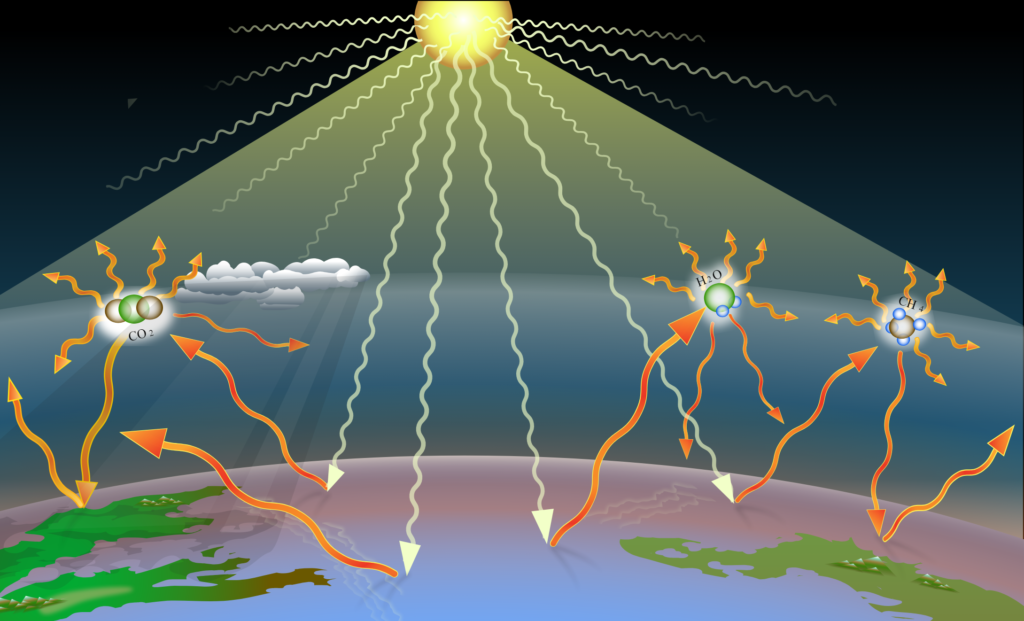The greenhouse effect is a vital natural process that sustains life on Earth. When solar radiation reaches our atmosphere, some is absorbed by the Earth’s surface, warming it. The Earth then emits infrared radiation back into the atmosphere. Greenhouse gases like carbon dioxide, methane, and water vapor trap some of this outgoing radiation, preventing it from escaping into space. This trapped heat keeps the Earth’s surface warm enough to support life, a phenomenon akin to a greenhouse trapping heat for plant growth.
However, human activities have intensified this effect. The burning of fossil fuels, deforestation, and industrial processes release additional greenhouse gases into the atmosphere, leading to an imbalance. This excess trapping of heat causes the Earth’s temperature to rise, resulting in global warming.
The consequences of global warming are far-reaching and severe. They include rising sea levels due to the melting of polar ice caps and glaciers, more frequent and intense heatwaves, changes in precipitation patterns leading to floods and droughts, and disruptions to ecosystems and biodiversity.
Addressing the greenhouse effect and global warming requires urgent and coordinated action. Efforts to reduce greenhouse gas emissions, transition to renewable energy sources, improve energy efficiency, and protect and restore forests are crucial steps. Additionally, adapting to the impacts of climate change through resilient infrastructure, sustainable land management, and community preparedness is essential.
Public awareness, international cooperation, and policy interventions are paramount in tackling this global challenge. By understanding and mitigating the greenhouse effect, we can work towards a sustainable and resilient future for generations to come.
IMPORTANT VOCABULARIES:
- Vital: Absolutely necessary; essential for life or existence.
- Sustains: Supports, maintains, or keeps in existence.
- Intensified: Made more intense, stronger, or more extreme.
- Deforestation: The action of clearing forests, especially for commercial or agricultural purposes, leading to the permanent destruction of trees.
- Trapping: Capturing or confining something within a space or area, preventing its escape.
- Glaciers: Large masses of ice that form over many years from the accumulation and compression of snow, typically found in polar regions or high mountain valleys.
- Precipitation: Any form of water, such as rain, snow, sleet, or hail, that falls from the atmosphere onto the Earth’s surface.
- Droughts: Extended periods of abnormally low precipitation, resulting in water shortages, dry conditions, and reduced agricultural productivity.
- Biodiversity: The variety and variability of life forms on Earth, including species diversity, genetic diversity, and ecosystem diversity.
- Resilient: Capable of recovering quickly from difficulties or setbacks; able to withstand or adapt to challenging conditions.
- Sustainable: Meeting the needs of the present without compromising the ability of future generations to meet their own needs; capable of being maintained or continued over the long term.
- Mitigating: Alleviating, reducing, or lessening the severity or impact of something, such as a problem or crisis.






